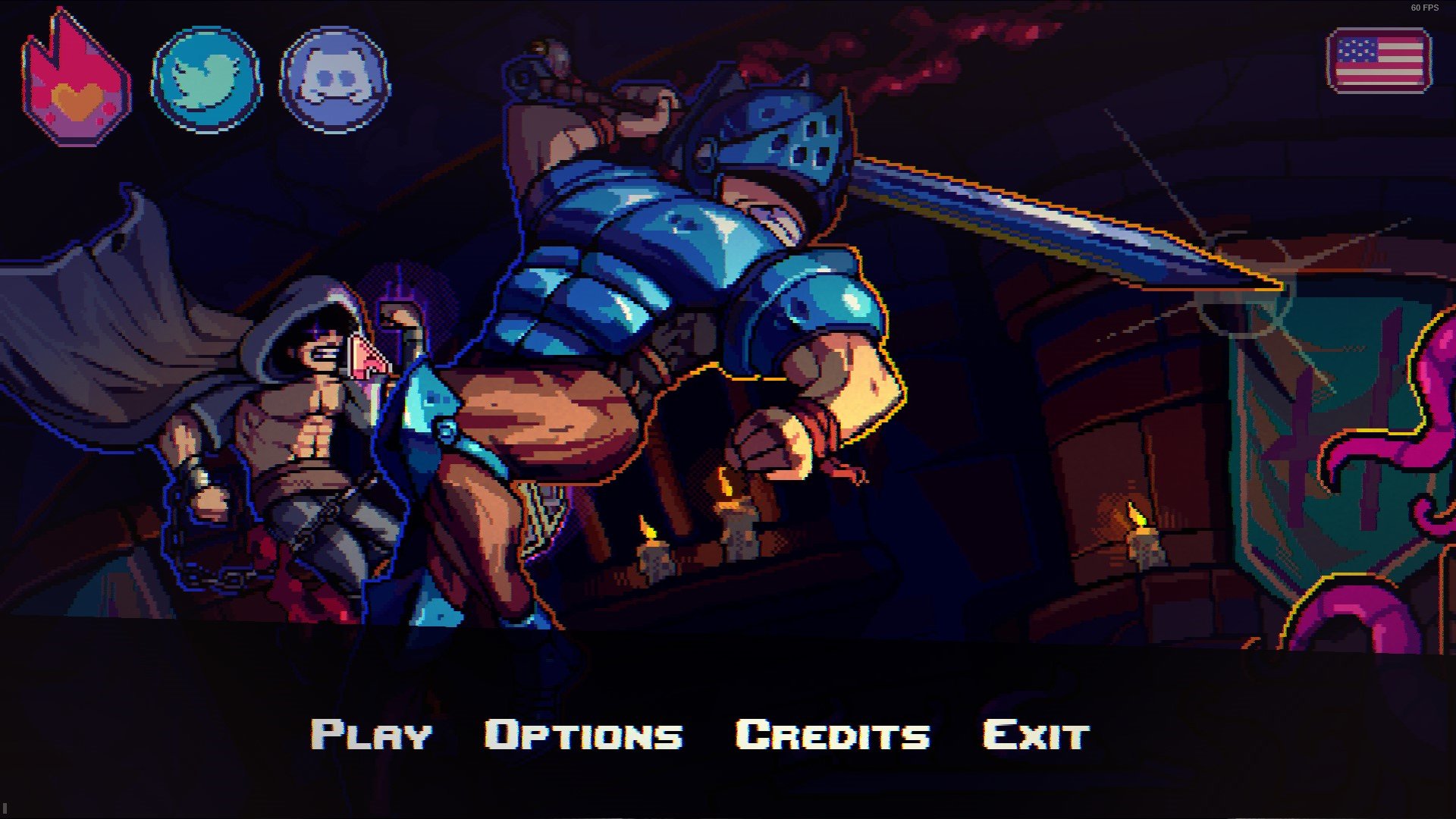Of all the games released recently on Steam, RUNGORE stood out to me the most. It stood out so much that I requested my Editor-in-Chief to give me the chance to review it on top of my other projects this week, and I’m glad I did because what I found was a unique experience that exceeded my curious expectations.
RUNGORE is a deckbuilding roguelike that tasks you with playing something between an auto battler and a card game.
I’ll explain. Each level in RUNGORE has your chosen character (known as a something-guy) running toward the right side of the screen. When your Guy encounters an enemy, he will engage in battle with said enemy on his own, attacking in sequence with his attack speed stat until either his or the enemy’s HP is depleted.
At the start of each round, you also are given a few cards drawn from a character-specific deck. These cards can initiate extra attacks on your enemy, give your Guy a specific buff, toss out status effects, etc. If you’ve played a card game, you get the idea. When an enemy is defeated, you’re given a random draw of new cards to pick from and tasked with moving on to the next battle.
RUNGORE immediately differentiates itself from other deckbuilding games with its real-time battle component. While you aren’t exactly playing a TCG while physically controlling your character, things are still happening in real-time with no pause button (you can slow down time later with an upgrade, but that’s it.) You have to strategize and play cards while combat is happening, often very quickly, and if you aren’t careful, you can end up wasting cards or, at worst, outright losing because you weren’t fast enough on the play.
Something I don’t love about RUNGORE is that you can, at times (and often will) receive upgrades in your post-battle selection that are the exact same or even worse versions of items you already have. For example, say you have the boots that increase your attack speed by 8 in your next encounter; you can find those same boots or a lower-tier version that only gives you an increase of 4 in your next loot pool and in the loot pools following.

At best, this feels frustrating because one of your upgrade choices is just sort of wasted. At worst, you can mistakingly select this upgrade and replace your own, effectively rebuffing yourself. Sure, you could argue that this serves to balance the game a bit, but I would have preferred to see these buffs stack. Let me throw bronze boots on my silver sneakers to increase my attack speed from 8 to 12. It would be a satisfying upgrade and would add more diversity to the build path since I wouldn’t just be grabbing the most optimal equipment for each slot.
Each character has their own playstyle, determined by their unique decks of cards. Some Guys can simply feel objectively better than others; Hungry Guy, for example, has a lot of healing, maximum health boosts, and a passive that makes him hit faster based on how much health he has. This makes him feel much better than, say, Knight Guy, whose playstyle is self-sacrificing, such as sacrificing his damage for armor (a second health bar) or trying to play a middle ground between the two. Hungry Guy just gets to have both tankiness and a ton of damage.

What drew me to RUNGORE was the game’s artstyle, and paired with the game’s unique enemy designs and humorous atmosphere, I found myself hooked.
All of RUNGORE is done in a hand-drawn pixel art style that vividly reminds me of the flash animations of 2010’s Newgrounds. It’s a style that is as nostalgic to me as it is just plain nice to look at, with a sort of muted neon color palette that makes everything feel vibrant and cartoony without being hard to look at. It still maintains something of a sinister feeling when going against some of the game’s more grotesque enemies and locations.
The enemy designs are a massive plus to me. You’ll face anything from fleshy bits and mutated mounds of arms to traffic cones wielding handguns and crates with abs.
This is something that the game does extraordinarily well. Through the game, you’ll be hit with nonchalant, heavily sarcastic humor deeply seeded in the internet zeitgeist and popular references. You’ll see anything from anime poses redrawn on the cards you use to an actual boss fight against ninja turtles (who are just regular turtles with ninja weapons.)

Yet, alongside that humor, the game will seamlessly slip into dark, somewhat creepy, and serious locations, totally devoid of the “lol random” jokes of the last segment and just genuinely, immersively eerie. I wouldn’t go so far as to call RUNGORE a horror game or even call these segments scary, but they are interesting and immersive, and they add both a nice break from the game’s nonstop humor as well as an impressive showcase that RUNGORE is more than just a one-trick pony.
RUNGORE can feel challenging; at times, you may even feel stuck, but I never felt trapped. While some goods are locked behind the progression of specific levels, you can always run back through other segments you’ve already played and give new Guys a try to stack gold and purchase unlockables that improve your runs.
RUNGORE offers a lot but isn’t complex enough to give you a headache just trying to figure it out. For only $15 ($11 on sale at the time of writing), I think it’s an excellent little game that deserves your attention.
The Final Word
RUNGORE is an impressively unique little roguelike that I feel deserves more attention. It’s fantastic art, and the ability to sell you on both comedic and dramatic atmospheres paired with a unique spin on the deckbuilding archetype makes for something that’s worth trying and easy to appreciate.
9
Try Hard Guides received a PC review code for this game. Find more detailed looks at popular and upcoming titles on our Game Reviews page! RUNGORE is available on Steam.


